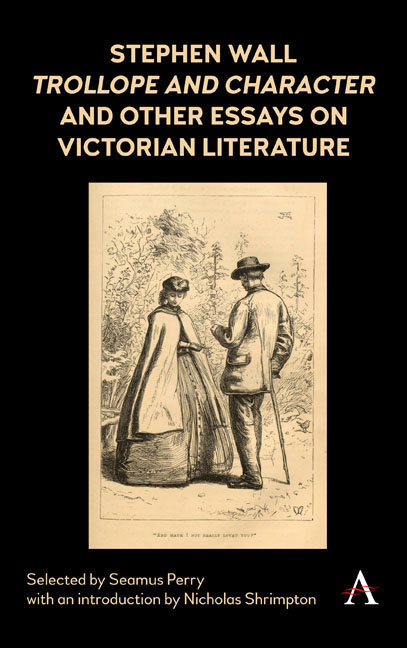Book contents
- Frontmatter
- Contents
- Preface
- Introduction: Stephen Wall and Trollope
- Part 1 On Trollope
- Part 2 On Dickens and Others
- 3 [George Eliot and Her Readers] [1965]
- 4 Jane Austen's Judgments [1968]
- 5 Dickens: New Words and Old Opinions [1969]
- 6 [Dickens and His Readers] [1970]
- 7 Dickens in 1970 [1971]
- 8 Annotated English Novels? [1982]
- 9 Affective Intentions [1985]
- 10 Virtuoso Variations [1987]
- 11 Going Beyond the Repertory [1990]
- 12 A Little Local Irritation [1998]
- Index
9 - Affective Intentions [1985]
from Part 2 - On Dickens and Others
Published online by Cambridge University Press: 25 July 2018
- Frontmatter
- Contents
- Preface
- Introduction: Stephen Wall and Trollope
- Part 1 On Trollope
- Part 2 On Dickens and Others
- 3 [George Eliot and Her Readers] [1965]
- 4 Jane Austen's Judgments [1968]
- 5 Dickens: New Words and Old Opinions [1969]
- 6 [Dickens and His Readers] [1970]
- 7 Dickens in 1970 [1971]
- 8 Annotated English Novels? [1982]
- 9 Affective Intentions [1985]
- 10 Virtuoso Variations [1987]
- 11 Going Beyond the Repertory [1990]
- 12 A Little Local Irritation [1998]
- Index
Summary
Recent criticism of Victorian fiction is often so abstract in tone and so desiccating in tendency that Barbara Hardy's decision to study the ways in which it expresses and arouses feeling seems almost novel. It would hardly have surprised Dickens, Charlotte Brontë, Thackeray or George Eliot – all intensely emotional people who as writers aimed in their different styles to produce strong responses in their readers. They let them see that they are doing so, however, and this gives their texts that reflexive element now thought so desirable. Even if some Victorian sentiments may have come to seem dated or excessive, this self- conscious ingredient in the affective mix can be discussed in a modern context and may comfort those who might grow restive at Professor Hardy's policy of taking the emotional vocabulary of her chosen novelists too much at their own valuation.
That vocabulary is often more remote than present- day critical packaging leads us to suppose. In an excellent account of the way in which Charlotte Brontë thrives artistically on moral extremes which are nevertheless made to meet in the resolution which her strong but agitated protagonists desire and ultimately attain, Barbara Hardy shows how selfanalysis turns to allegory to articulate the interior drama. Jane Eyre's and Lucy Snowe's internal debates demonstrate how instinctively they see their self- divisions in terms of conflict between personifications such as Feeling, Reason, Conscience, Imagination and so on. The deployment of such traditional and now perhaps archaic figures is made telling not only because the abstractions themselves are given an intense physical life as they struggle for control, but because their activities are shown to coexist with the ordinary actions of life – having breakfast, writing letters, going for a walk. The deep structures of Charlotte Brontë's novels have been given a good deal of attention lately – particularly by feminist critics, for obvious reasons. Hardy's brief but highly illuminating analysis of the actual language in which the heroines struggle to reconcile themselves to or master their fate redirects us to the importance of what lies on the novels’ surface. She reminds us how important it is to attend to the line- by- line conduct of the narrative, and has none of the barely suppressed impatience with what the Victorians took to be the true voice of feeling which is sometimes found.
- Type
- Chapter
- Information
- Publisher: Anthem PressPrint publication year: 2018



